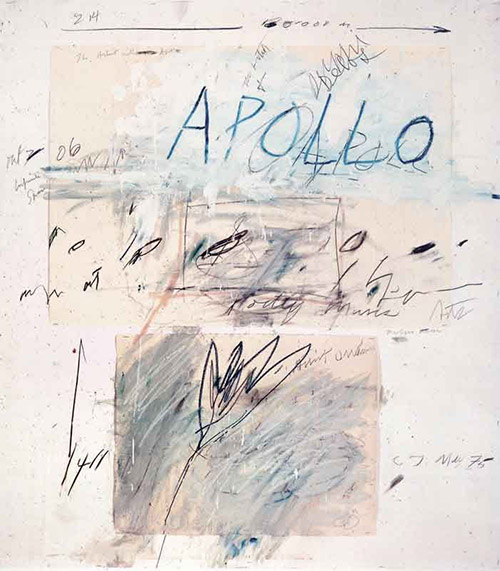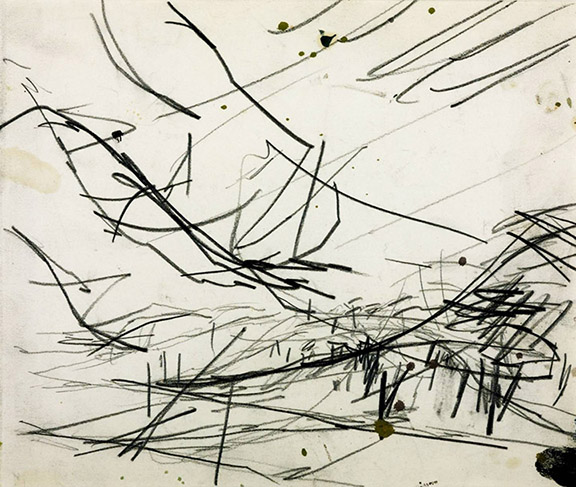
The Power of Line
Line is the first mark we make. We all have within us an innate mark making language and this language can be developed and brought to life! When we think about abstract painting, mark making becomes a crucial element that evokes energy, expression and direction.
Do you include a variety of expressive marks and lines in your work?
There are artists who dedicate much of their practice to exploring the power of line. Cy Twombly creates line that appears impermanent and spontaneous, evoking scribbles. He states: one must go back to those first lines, the lines that are free to express without the pressure of representation.
Everybody makes their own unique set of marks and every medium has its own particular quality of marks.

Cy Twombly, Apollo and the Artist, 1975 Oil paint, wax crayon, pencil and collage
Marks are the alphabet with which drawing and painting is made. We have an emotional response to jagged lines, versus curved lines, short to long, dark to light.
How do we know what constitutes a "good" mark or "better" mark? We can sharpen our eye by developing our own personal mark making language. By paying attention to our response to certain lines and marks, we can elevate our sensitivity.
There are an infinite number of marks possible, and the names we have for them are very limited — dots, dashes, and smudges. It is very difficult to refer to specific marks and and know that the term adequately communicates its intended meaning.
Many times it's the addition of some emotive marks that shift your painting from stuck to energized!

Frank Auerbach, Working drawing for "Primrose Hill" 1968, Black pencil on paper
"The important thing is to keep drawing when you start to paint. Never graduate from drawing."
—John Sloan
[Image at top: Matisse at Work]
Join my monthly newsletter and never miss a post
Each month I share explorations of master artists' works, elements of abstraction, and behind-the-scenes of my own painting journey, delivered to your inbox.

